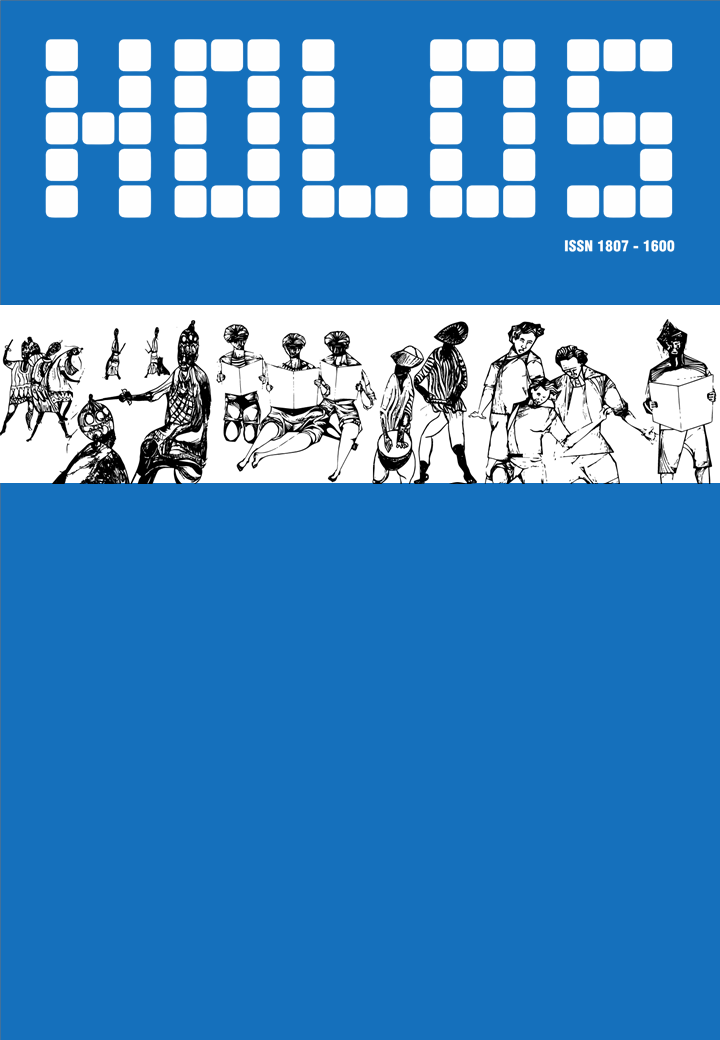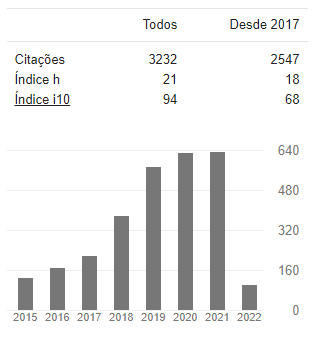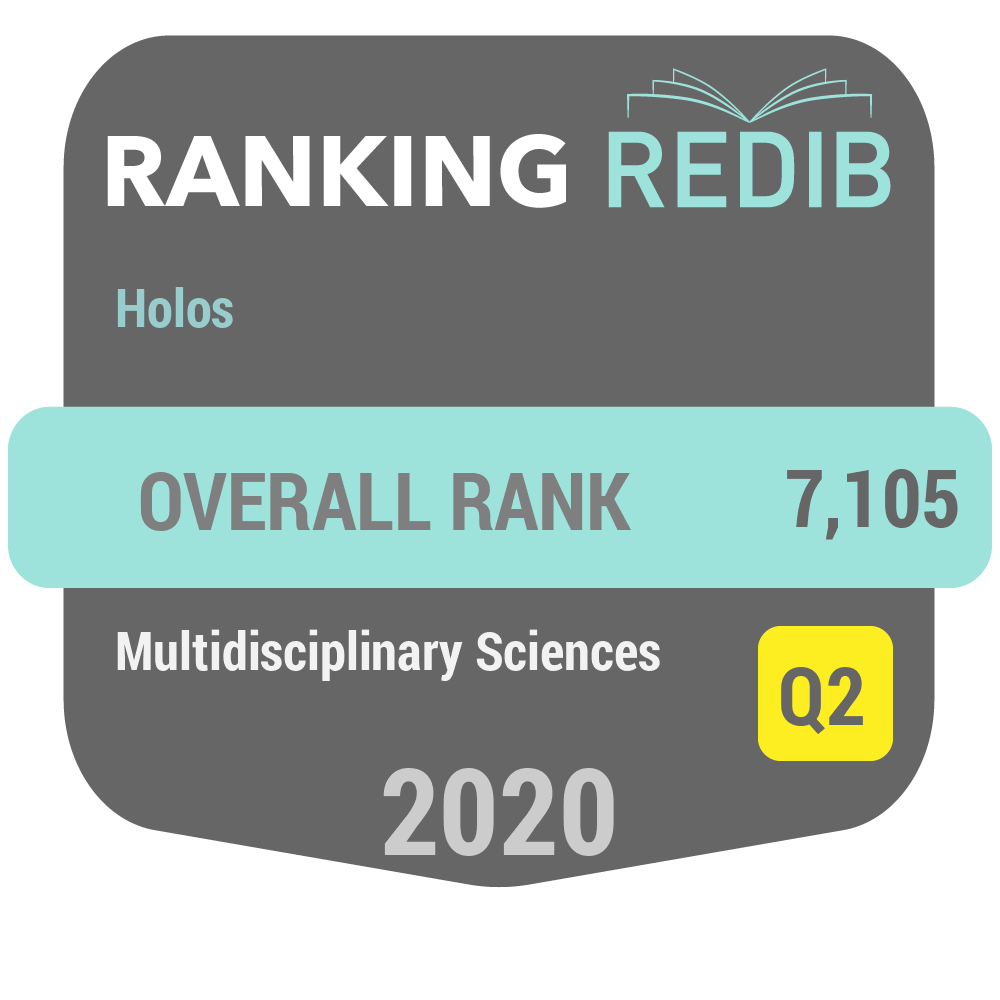UNA CLASIFICACIÓN DE LOS ESTABLECIMIENTOS DE OCIO NOCTURNO: EL CASO DE IBIZA (ESPAÑA)
DOI:
https://doi.org/10.15628/holos.2016.4301Palavras-chave:
Ibiza, Ocio Nocturno, Oferta discotecas, Clasificación discotecas, Tipos Ocio NocturnoResumo
Ibiza es muy conocida por sus discotecas y fiestas, siendo uno de los referentes mundiales del sector. El objetivo de este trabajo es realizar una primera propuesta de clasificación de los establecimientos existentes en la isla de Ibiza. La metodología se basa en la consulta de bibliografía, prensa local y páginas web especializadas. Por una parte hay las discotecas, que pueden dividirse en macrodiscotecas de relevancia internacional como son Amnesia, Pachá o Space, y discotecas de relevancia eminentemente local y poco conocidas fuera de la isla. Por otra parte, existe una oferta formada por los Beach Clubs, los Lounge Clubs, los Disco Pubs, los Hotel Clubs, los restaurantes espectáculo y los Party Boats. La principal diferencia entre los dos grandes grupos es que las discotecas son establecimientos cuya actividad declarada principal es el ocio nocturno, cobrando entrada, y el segundo grupo son empresas cuya actividad principal es la hostelería pero han adoptado los eventos musicales como elemento diferenciador. Es un importante reto de futuro la regulación de una oferta que engloba a tantos tipos de establecimientos distintos, reduciendo los impactos negativos sobre los residentes sin limitar la actividad empresarial.
Downloads
Referências
AGÈNCIA DE TURISME DE LES ILLES BALEARS. El turismo a les Illes Balears. Anuari 2013. Palma de Mallorca: Agència de Turisme de les Illes Balears, 2014.
AGUIRRE, B.E. et al. Normative collective behavior in the station building fire. Social Science Quarterly, v. 92, n. 1, p. 100-118, 2011.
ALLEMAND, R. De la mystification des pratiques à la négation du réel? Ethnographie de discothèques montpelliéraines. Deviance et Societe, v. 34, n. 1, p. 29-48, 2010.
ANDERSON, T., DALY, K., RAPP, L. Clubbing masculinities and crime: A qualitative study of Philadelphia nightclub scenes. Feminist Criminology, v. 4, n. 4, p. 302-332, 2009.
ANDERSSON, J. Vauxhall's post-industrial pleasure gardens: 'Death wish' and hedonism in 21st-century London. Urban Studies, v. 48, n. 1, p. 85-100, 2011.
BEACH, E.F., WILLIAMS, W., GILLIVER, M. Hearing protection for clubbers is music to their ears. Health Promotion Journal of Australia, v. 21, n. 3, p. 215-221, 2011.
BELLIS, M.A. et al. The role of an international nightlife resort in the proliferation of recreational drugs. Addiction, v. 98, n. 12, p. 1713-1721, 2003.
BELLIS, M.A. et al. Relative Contributions of Holiday Location and Nationality to Changes in Recreational Drug Taking Behaviour: A Natural Experiment in the Balearic Islands. European Addiction Research, v. 15, n. 2, p. 78-86, 2009.
BELLIS, M.A., HUGHES, K. Sexual behaviour of young people in international tourist resorts. Sexually Transmitted Infections, v. 80, n. 1, p. 43-47, 2004.
BORA BORA. Disponível em: <http://www.boraboraibiza.net/> Accesso em: 12 abr. 2015.
BOYD, J. Producing Vancouver's (hetero)normative nightscape. Gender, Place and Culture, v. 17, n. 2, p. 169-189, 2010.
CAFÉ DEL MAR. Disponível em: <http://www.cafedelmarmusic.com/> Accesso em: 10 abr. 2015.
CALAFAT, A. et al. Nightlife young risk behaviours in Mediterranean versus other European cities: Are stereotypes true? European Journal of Public Health, v. 21, n. 3, p. 311-315, 2011.
CAMPO, D., RYAN, B.D. The entertainment zone: Unplanned nightlife and the revitalization of the American downtown. Journal of Urban Design, v. 13, n. 3, p. 291-315, 2008.
DAMANI, R. et al. Emotional intimacy predicts condom use: Findings in a group at high sexually transmitted disease risk. International Journal of STD and AIDS, v. 20, n. 11, p. 761-764, 2009.
DARGAN, P.I., ALBERT, S., WOOD, D.M. Mephedrone use and associated adverse effects in school and college/university students before the UK legislation change. QJM, v. 103, n. 11, p. 875-879, 2010.
DEAN, R., MULLIGAN, J. First aid provision in nightclubs and other entertainment venues. Nursing standard, v. 24, n. 9, p. 35-40, 2009.
DIARIO DE IBIZA. Disponível em: <http://www.diariodeibiza.es/> Accesso em: 15 abr. 2015.
DISCOTECA PRIVILEGE. Disponível em: <http://privilegeibiza.com/> Accesso em: 10 abr. 2015.
DJMAG. Disponível em: <http://www.top100clubs.com/> Accesso em: 15 abr. 2015.
DOWNING, J. et al. Factors associated with risky sexual behaviour: A comparison of British, Spanish and German holidaymakers to the Balearics. European Journal of Public Health, v. 21, n. 3, p. 275-281, 2011.
ELLEDGE, R.O.C. et al. The role of alcohol in maxillofacial trauma-a comparative retrospective audit between the two centers. Alcohol, v. 45, n. 3, p. 239-243, 2011.
FORSYTH, A.J.M. Front, side, and back-loading: Patrons' rationales for consuming alcohol purchased off-premises before, during, or after attending nightclubs. Journal of Substance Use, v. 15, n. 1, p. 31-41, 2010.
FORSYTH, A.J.M., LENNOX, J.C. Gender differences in the choreography of alcohol-related violence: An observational study of aggression within licensed premises. Journal of Substance Use, v. 15, n. 2, p. 75-88, 2010.
GOOGLE MAPS. Disponível em: <https://www.google.es/maps> Accesso em: 18 abr. 2015.
GRUPO PACHÁ. Disponível em: <http://www.pacha.com/> Accesso em: 10 abr. 2015.
GUÉGUEN, N. Menstrual cycle phases and female receptivity to a courtship solicitation: an evaluation in a nightclub. Evolution and Human Behavior, v. 30, n. 5, p. 351-355, 2009.
GUIDA IBIZA. Disponível em: <http://www.guida-ibiza.com/> Accesso em: 12 abr. 2015.
HALIOS, C. et al. Exposure to fine particulate matter in ten night clubs in Athens Greece: Studying the effect of ventilation, cigarette smoking and resuspension. Science of the Total Environment, v. 407, n. 17, p. 4894-4901, 2009.
HENDRIE, C.A., MANNION, H.D., GODFREY, G.K. Evidence to suggest that nightclubs function as human sexual display grounds. Behaviour, v. 146, n. 10, p. 1331-1348, 2009.
HONG, L.K., DUFF, R.W. The center and the peripheral - Functions and locations of dance clubs in Los Angeles. Journal of Contemporary Ethnography, v. 26, n. 2, p. 182-201, 1997.
HUANG, J. Night on the town. Taiwan Review, v. 61, n. 6, p. 18-21, 2011.
HUGHES, K. et al. Predictors of violence in young tourists: a comparative study of British, German and Spanish holidaymakers. European Journal of Public Health, v. 18, n. 6, p. 569-574, 2008.
HUGHES, K. et al. Alcohol, drugs, sex and violence: health risks and consequences in young British holidaymakers to the Balearics. Adicciones, v. 21, n. 4, p. 265-277, 2009.
HUGHES, K., BELLIS, M.A. Sexual behaviour among casual workers in an international nightlife resort: a case control study. BMC Public Health, v. 6, p. 39, 2006.
INSTITUT D’ESTADÍSTICA DE LES ILLES BALEARS (IBESTAT) (2015). Estadísticas. Palma de Mallorca: Ibestat. Disponível em: <http://ibestat.caib.es//> Accesso em: 15 fev. 2015.
JÄRVINEN, M., RAVN, S. From recreational to regular drug use: Qualitative interviews with young clubbers. Sociology of Health and Illness, v. 33, n. 4, p. 554-569, 2011.
JONES, L. et al. Reducing harm in drinking environments: A systematic review of effective approaches. Health and Place, v. 17, n. 2, p. 508-518, 2011.
KUBACKI, K. et al. Comparing nightclub customers' preferences in existing and emerging markets. International Journal of Hospitality Management, v. 26, n. 4, p. 957-973, 2007.
MAK, Y.T. et al. The toxic effect of ketamine on SH-SY5Y neuroblastoma cell line and human neuron. Microscopy Research and Technique, v. 73, n. 3, p. 195-201, 2010.
MEASHAM, F., HADFIELD, P. Todo empieza con «E»: Exclusión, etnicidad y formación de élites en el mundo actual de las discotecas inglesas. Adicciones, v. 21, n. 4, p. 363-386, 2009.
MOSS, G.A., PARFITT, S., SKINNER, H. Men and women: Do they value the same things in mainstream nightclubs and bars. Tourism and Hospitality Research, v. 9, n. 1, p. 61-79, 2009.
PALLADIUM HOTEL GROUP. Disponível em: <http://www.palladiumhotelgroup.com/> Accesso em: 15 abr. 2015.
POTIER, M. et al. The risks of amplified music for disc-jockeys working in nightclubs. Ear and Hearing, v. 30, n. 2, p. 291-293, 2009.
RAMÓN, E. Historia del turismo en Ibiza y Formentera. 1900-2000. Eivissa: Genial Ediciones Culturals, 2001.
RAMÓN, J., SERRA, A. Historia del turismo en Ibiza: Aplicación del Ciclo de Vida del destino Turístico en un destino maduro del Mediterráneo. PASOS: Revista de Turismo y Patrimonio Cultural, v. 12, n. 4, p. 899-913, 2014.
RESTAURANTE CABARET LÍO. Disponível em: <http://www.lioibiza.com/> Accesso em: 15 abr. 2015.
RIDNER, S.L. et al. College students' exposure to tobacco marketing in nightclubs and bars. Journal of American College Health, v. 59, n. 3, p. 159-164, 2011.
ROWE, S.C. et al. Establishments licensed to serve alcohol and their contribution to police-recorded crime in Australia: Further opportunities for harm reduction. Journal of Studies on Alcohol and Drugs, v. 71, n. 6, p. 909-916, 2010.
SKINNER, H. et al. Polish nightclubs and bars: Management insights into what customers really want. Journal for East European Management Studies, v. 13, n. 2, p. 154-169, 2008.
SKINNER, H., MOSS, G., PARFITT, S. Nightclubs and bars: What do customers really want? International Journal of Contemporary Hospitality Management, v. 17, n. 2, p. 114-124, 2005.
STANTON, C.R. et al. Promoting tobacco through the international language of dance music: British American tobacco and the Ministry of Sound. European Journal of Public Health, v. 21, n. 1, p. 21-28, 2011.
SUMNALL, H. et al. A choice between fun or health Relationships between nightlife substance use, happiness, and mental well-being. Journal of Substance Use, v. 15, n. 2, p. 89-104, 2010.
TODOROVIC, M., BAKIR, A. Inaudible noise: Belgrade's Academy Club: Legacy, old locals and new spaces. Leisure Studies, v. 24, n. 4, p. 415-434, 2005.
WINTER MUSIC CONFERENCE. Disponível em: <http://www.wintermusicconference.com/> Accesso em: 15 abr. 2015.









































